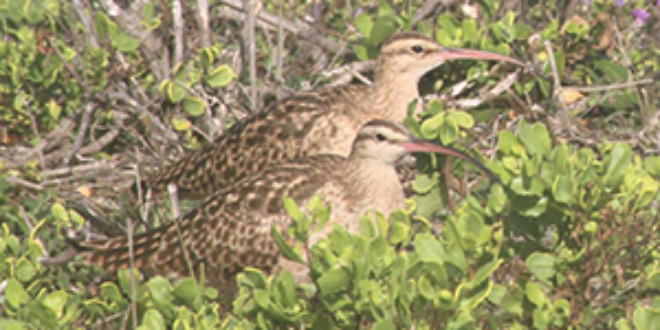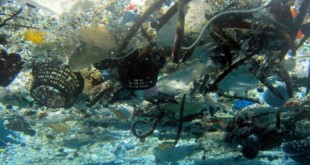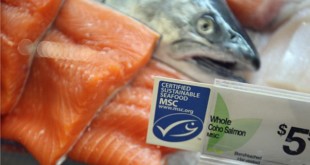Last Spring I took a group of First Graders to Waimea Valley Park. The docent pointed out a Hawaiian Moorhen and said that there were only 400 of them left, in the world. I was amazed. There were at least four or five of the same birds in the water hazard outside my bedroom window where I live in the condos at Turtle Bay Resort. I knew that the Resort had long standing plans for expanding at Turtle Bay, that the issue was highly contested and largely opposed by the local people.
The most frequently voiced concerns were over traffic and Hawaiian burials and cultural sites. It seemed to me that the Federally and State listed threatened and endangered species of animals and plants there needed a voice too. Apart from the State, Federal lists of protected species, and International Union for Conservation of Nature (IUCN) Red Listed species, there are other laws: the Marine Mammal Protection Act, The Migratory Bird Treaty Act and The Clean Water Act. This area of coast is part of the Humpback Whale National Marine Sanctuary which is currently being reconceived as an “ecosystem” habitat (to include fish, coral etc) rather than a single species sanctuary.
Two of the primary goals of the Turtle Bay Resort (TBR) in implementing their Proposed Action in the recently released Draft Supplemental Environmental Impact Statement is to provide more access for people (and bikes, horses and cars) to the five miles of shoreline and Punao”olapa Marsh, another goal is to enhance and protect the environment. These goals contraindicate the other and are incompatible. Perhaps the only credible balance of these two conflicting ideals exists at the Resort as it is today. Even today there are problems such as:
1. Unresearched effects of pesticides and fertilizers especially in the wetland areas (golf courses),
2. The lack of a predator control program to support the survival rate of endangered birds and plants,
3. The need for invasive plant control and mitigation in the marsh and dune areas.
4. No education provided to golfers or golf staff regarding the Endangered Waterbirds, their ground nesting behaviors or speed limits and signs posted on other properties where they are present.
How are we to imagine that mitigation proposed will ever be carried out? If construction begins, are no regulations that directly address the implementation of mitigation measures. They are essentially promises. There was mitigation recommended by the United States Fish and Wildlife Service in 1986 for the Punah”olapa Marsh which involved dredging the marsh and clearing out two largely open water ponds complete with pumps and a fence. The Punaho”olapa Marsh is designated Supporting Habitat for the four endangered species of waterbirds Hawaiian Coot, Stilt, Moorhen and Duck.This was never implemented. Mr Stotesbury stated that the Resort was issued a moratorium on all work regarding the Marsh restoration in 2010. That does not explain the lack of action for over twenty years.
The DSEIS claims that the TBR property does not contain, or is not adjacent to, any designated Critical Habitat for Endangered Species of plant or animal protected under the United States Endangered Species Act. However,
1. TBR is in fact adjacent to the James Campbell National Wildlife Refuge. It is designated Critical Habitat for the four species of waterbirds. One hundred and seventeen species of birds have been documented on that property, as well as endemic insects, endangered plants and endangered Hawaiian Hoary Bats.
2. On the TBR property, 100 acres of the Punaho”oplapa Marsh is a designated Supporting Habitat for the four species of endangered Waterbirds, Hawaiian Stilt, Hawaiian Coot, Hawaiian Moorhen and Hawaiian Duck. The Wastewater Treatment Plant for the property, mauka of Kamehameha Highway is also designated Supporting Habitat for these birds. The golf course water features are also mentioned as important habitat for the waterbirds. The Recovery Plan for these Waterbirds produced by the United States Fish and Wildlife Serice (USFWS), states that any further development on the TBR property would impact these waterbirds.
3. In the early 2000s, the Federal Government considered the coastal area at Kahuku Point and Eastwards for designation as Critical Habitat for a number of endangered plants. In the end, Kaena point was designated and Kahuku Point was not. However, that this area was even considered, is testament to its importance as habitat for native coastal vegetation.
4. The National Ocenanic and Atmospheric Administration is in the process of determining the designation of Critical Habitat for Monk Seals. A persistent preference has been shown by Hawaiian Monk Seals for this area to pup, forage, and haul out to rest. Therefore, one can only imagine that this area will be designated. The implications of this for the proposed development are, as of now, unknown.
 The final judgement of the Hawaii Supreme court in 2010 was to direct the Turtle Bay Resort to specifically address changes in the environment since the original EIS done in the 1980s. One of the noted changes was is increased presence of critically endangered Hawaiian Monk Seals and Green Sea Turtles. Actual consideration given in the biological surveys and the proposed mitigation for the seals and turtles is totally inadequate. Basically they get thousands more people, every day, traipsing around the beaches and all they get to mitigate that is an ill defined “Educational Program”. This (likely expected to be implemented by volunteers) will be all that protects them from the trampling of their habitat, increased disturbance, and potential fro increased harassment. While quanitative treatment is not usually a fair portrayal of attention, there are less than 10 pages devoted to seals and turtles in the 1,635 page document.
The final judgement of the Hawaii Supreme court in 2010 was to direct the Turtle Bay Resort to specifically address changes in the environment since the original EIS done in the 1980s. One of the noted changes was is increased presence of critically endangered Hawaiian Monk Seals and Green Sea Turtles. Actual consideration given in the biological surveys and the proposed mitigation for the seals and turtles is totally inadequate. Basically they get thousands more people, every day, traipsing around the beaches and all they get to mitigate that is an ill defined “Educational Program”. This (likely expected to be implemented by volunteers) will be all that protects them from the trampling of their habitat, increased disturbance, and potential fro increased harassment. While quanitative treatment is not usually a fair portrayal of attention, there are less than 10 pages devoted to seals and turtles in the 1,635 page document.
A well known Turtle Bay resident Hawaiian Monk Seal, R5AY, also known as Honey Girl, was recently released back at Turtle Bay after surgery to remove a hook from her tongue. She has had four pups (not three) here along a stretch of coastline currently slated to have “Resort Residential” housing along it. Her three surviving daughters still frequent the area. NOAA does recommend minimizing interactions between seals and people and because any activity that could disturb the seals can be considered a form of “Take”, under the Endangered Species Act, one might suppose that NOAA will have something to say about the Resort”s proposals for the coastlines. The Near Shore Resources Assessment cites one seal observed. That is probably because the observers limited themselves to Kawela Bay. The Hawaiian Monk Seals are observed more frequently on the Eastern side of property. There is ample data provided by NOAA and the Hawaiian Monk Seal Response Team to document their presence.
The survey of turtles was restricted to Kawela Bay – while there are more turtles over there, they are also present in Turtle Bay and Kuilima Bay. No account of that was made. In a recent stranding incident. The hotel could not locate where it had stored the dead turtle when the NOAA worker came to pick up the carcass for necropsy. Only after numerous calls were made to the Resort by the author, was the dead turtle located and picked up by NOAA. It was at that point, three days later, too discomposed to provide useful information on cause of death. A detailed program regarding communication about and protection of native animals and plants on the property is needed currently.
The biological surveys conducted apparently indicate no Hawaiian Owls (Pueo) or Hawaiian Hoary Bats (both protected) on the property. This could be because the times of the observations were not those when these animals are most active. Adjacent properties have documented the presence of both, (First Wind and James Campbell National Wildlife Refuge) as well as Petrels, Shearwaters, Ospreys and Peregrine Falcon to mention a few. First Wind also conducted surveys of invertebrates (bugs) on their adjacent property. endangered Coastal Damselflies and endemic Kamehameha Butterflies have been frequently observed on the property. The DSIES surveys mentions little about the migratory birds that winter here from Alaska and Russia. Most of us are familiar with the Golden Plovers that come here during winter. Turtle Bay also hosts Bristle Thighed Curlews, Wandering Tattlers, Ruddy Turnstones, Dowitchers and others during the winter months.
Perhaps even more shocking is that the biological surveyors declare that there are no endangered species of plant on the property. This is simply not true.There is Ohai on the property and Ohai is on the Endangered Species List. This plant is very easy to identify.If this has been overlooked, what others may remain overlooked or unaccounted for? During the survey of the Punah”olapa Marsh the investigators admit they did not visit much of the area. They relied on satellite images of an open pond area. It doesn”t make sense to not investigate an area for fear of disturbing endangered ecosystems, and then say no endangered species were found.
The Resort is proposing a “bird watching” park next to the Marsh. The presence of people, lights traffic in proximity to the bird habitat is not fully addressed, or mitigated. Again, the only mitigation proposed is “education”. One might also question the soundness of repositioning the stables adjacent to the marsh too. There is also a path proposed through the marsh (which exists now) to allow access. Again the conflict of access and protection presents itself. The Resort maintains that no Federal or State funds will be needed to complete this expansion. However, they will be relying on “coordination” with USFWS, NOAA, and the Army Corps of Engineers and the Environmental Protection Agency, regarding the Marsh.
There is no mention of a predator control program in the DSEIS, despite predators being mention as a problem in the 2003 EA for the Ocean Villas. It was noted that alien species of birds, as well as rodents, mongoose, feral cats and dogs would likely move into the marsh area in the event that construction was begun in proposed areas . It was admitted at the time that this would put extra stress on the fragile ecosystem and Endangered Waterbirds. A detailed Predator Control Program needs to be developed and implemented, if the TBR is continue to portray itself as a steward of the environment.
Grubbing, grading and structural fill are going to impact the natural structure of the wetland. As it is now the East Main Drain gets backed up during heavy rain and the golf course floods to a depth of a few meters. Perhaps this is a natural process that should continue. In the past it was proposed that Kawela be dredged. It was posited at the time that there was not much coral or fish to worry about. This plan has not resurfaced. There were some important brine ponds included in past surveys near Kawela and Kahuku Point. The author is unsure whether they are still in existence. No direct mention was made of any of them in the current document. The official size of the marsh is 30 acres smaller that it used to be in the 1980s. The Resort proposes to use the non potable water from a spring near the marsh (part of the marsh system) for irrigation. How will this affect the Marsh? Further analysis need to be done to determine the impact of the proposed construction and changes in drainage. Questions need to be answered about those ponds and the size of the marsh.The Turtle Bay Resort pats itself on the back for having a building set back from the shoreline greater than that required by law. However, they are obliged to do this because of the flooding and inundation risks associated with being nearer the shoreline. The Resort says it cannot build further inland because the ironwood trees block the view of the ocean. Why not remove the trees and restore the dunes? Many of the dunes are overgrown (through neglect over the past 20 years) with ironwoods trees that have crowded out native coastal plants. Ideally these should be restored, not completely destroyed forever by building on them. The document talks about the dunes blocking surface flows during heavy precipitation and cause ponding and flooding. This is a coastal wetland, periodic flooding is what happens.
Mention is made of “if” the Wastewater Treatment Plant should have a spill, but there was a spill in August 2012- 23,000 gallons of sewage into Turtle Bay. The Resort continued with scheduled Stand Up Paddle races that weekend, despite a Department of Health warning to stay out of that water. There were a dozen small signs posted on the beach, But they did not mark the closed areas. Guests headed down the beach to swim, unaware of the warning. In Fall 2006 the large water feature connected to O”io streamwas literally full of raw sewage for a few weeks.
The Resort says it will promote the idea of making Kawela a Marine Life Conservation District.(MCLD). Two questions 1. Why was Kawela Stream not rerouted and push for an MLCD initiated years ago? 2 How do the developers propose to have a MLCD designation and still allow fishing, which is what they are suggesting? Also, the Proposed Action includes the giving of Kahuku Point, the beach and the dunes east it to the City and County for use as a park. How can this proposed use be consistent with the rare and fragile dune ecosystem here? In The Conservation Partner Alternative, TBR wants compensation in the order of tens or even hundreds of millions of dollars for not developing. Who has that kind of money?
The authors of the DSEIS have determined that they are pretty much in compliance with all the State and local policies and regulations. They reckon they don”t need any changes in zoning. However, they used to think they did. The might need another Special Management Area permit, They need Coastline Certification, because what they have is outdated. A National Pollution Discharge Elimination System Permit is required from Department of Health. A Joint Development Agreement may be required by the City and County of Honolulu. Building and grading permits from will be needed from the City and County Building Department. There are Federal Agencies that will be reviewing the DSEIS most importantly the National Oceanic and Atmospheric Administration United States Fish and Wildlife Service, Environmental Protection Agency. There are indeed many hurdles the the developer has to clear before they can implement any action.
This area of coastal wetland, while degraded by the presence of a hotel, condos and golf courses, does contain important ecosystems that are rare and fragile enough to warrant protection and restoration. Any expansion of the current footprint of the TBR is untenable with the presence of protected animal and plant species in the SEIS lands and incompatible with their long term survival. Because the developer has a global marketing strategy to attract visitors to this Fabled North Shore, they should expect to hear from not just locals here in Hawaii, but also from interested parties around the world. Everyone has a say in the fate of these ecosystems complete with Threatened and Endangered Species of all kinds. This stretch of coastal wetland is World Class and is marketed currently as such by the developer. All stakeholders in this situation should submit questions and comments to the appropriate parties. Submit early and submit often!
Submit comments to:
drew@replayresorts.com, leesichter@gmail.com, ccComments@honoulu.gov
Listen to radio interview (HPR The Conversation, Nov 29th) http://www.hawaiipublicradio.org/archive/theconversation scroll down to Nov29th show Angela Huntemer @6:15 for 10 minutes and Drew Stotesbury @36:50 for 10 minutes and sign an online petition to be released later this week.
Turtle Bay Resort, LLC
Kahuku, Hawai”i 96731
Mr. Drew Stotesbury, (808) 447-6951
drew@replayresorts.com
Lee Sichter LLC
45024 Malulani Street #1
Kane”ohe, Hawai”i 96744
Lee Sichter, (808) 382-3836
leesichter@gmail.com
Department of Planning and Permitting
650 South King Street, 7th Floor
Honolulu, Hawai”i 96813
Ms. Sharon Nishiura, (808) 768-8031
ccComments@honoulu.gov

Angela”s Bio: Originally from Dublin, Ireland, Angela has lived in Hawaii for twenty years and in the condos at Turtle Bay for six years. She is a public school teacher with two teenage sons. She has been a Sea Shepherd crew member numerous times over the past 20 years, serving on the bridge of three of their vessels
 Ocean Sentry
Ocean Sentry





